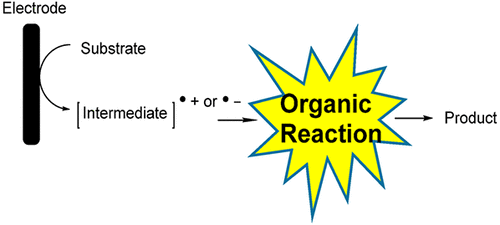当前位置:
X-MOL 学术
›
Chem. Rev.
›
论文详情
Our official English website, www.x-mol.net, welcomes your feedback! (Note: you will need to create a separate account there.)
Using Physical Organic Chemistry To Shape the Course of Electrochemical Reactions
Chemical Reviews ( IF 62.1 ) Pub Date : 2018-03-02 00:00:00 , DOI: 10.1021/acs.chemrev.7b00656 Kevin D. Moeller 1
Chemical Reviews ( IF 62.1 ) Pub Date : 2018-03-02 00:00:00 , DOI: 10.1021/acs.chemrev.7b00656 Kevin D. Moeller 1
Affiliation

|
While organic electrochemistry can look quite different to a chemist not familiar with the technique, the reactions are at their core organic reactions. As such, they are developed and optimized using the same physical organic chemistry principles employed during the development of any other organic reaction. Certainly, the electron transfer that triggers the reactions can require a consideration of new “wrinkles” to those principles, but those considerations are typically minimal relative to the more traditional approaches needed to manipulate the pathways available to the reactive intermediates formed downstream of that electron transfer. In this review, three very different synthetic challenges—the generation and trapping of radical cations, the development of site-selective reactions on microelectrode arrays, and the optimization of current in a paired electrolysis—are used to illustrate this point.
中文翻译:

使用物理有机化学来塑造电化学反应的过程
尽管有机电化学看起来与不熟悉该技术的化学家完全不同,但反应是有机反应的核心。因此,它们是使用在开发任何其他有机反应过程中使用的相同物理有机化学原理开发和优化的。当然,触发反应的电子转移可能需要考虑那些原理的新“皱纹”,但是相对于操纵该电子转移下游形成的反应性中间体可用的途径所需的更传统方法而言,这些考虑通常是最小的。在这篇综述中,提出了三个非常不同的合成挑战:自由基阳离子的产生和捕获,微电极阵列上位点选择性反应的发展,
更新日期:2018-03-02
中文翻译:

使用物理有机化学来塑造电化学反应的过程
尽管有机电化学看起来与不熟悉该技术的化学家完全不同,但反应是有机反应的核心。因此,它们是使用在开发任何其他有机反应过程中使用的相同物理有机化学原理开发和优化的。当然,触发反应的电子转移可能需要考虑那些原理的新“皱纹”,但是相对于操纵该电子转移下游形成的反应性中间体可用的途径所需的更传统方法而言,这些考虑通常是最小的。在这篇综述中,提出了三个非常不同的合成挑战:自由基阳离子的产生和捕获,微电极阵列上位点选择性反应的发展,



























 京公网安备 11010802027423号
京公网安备 11010802027423号